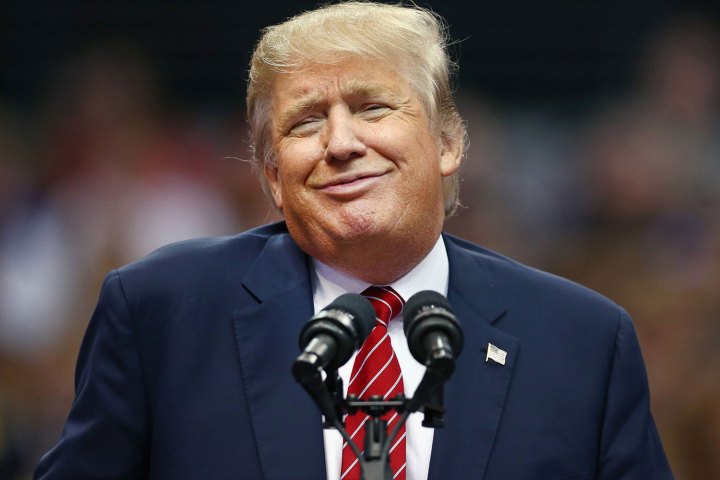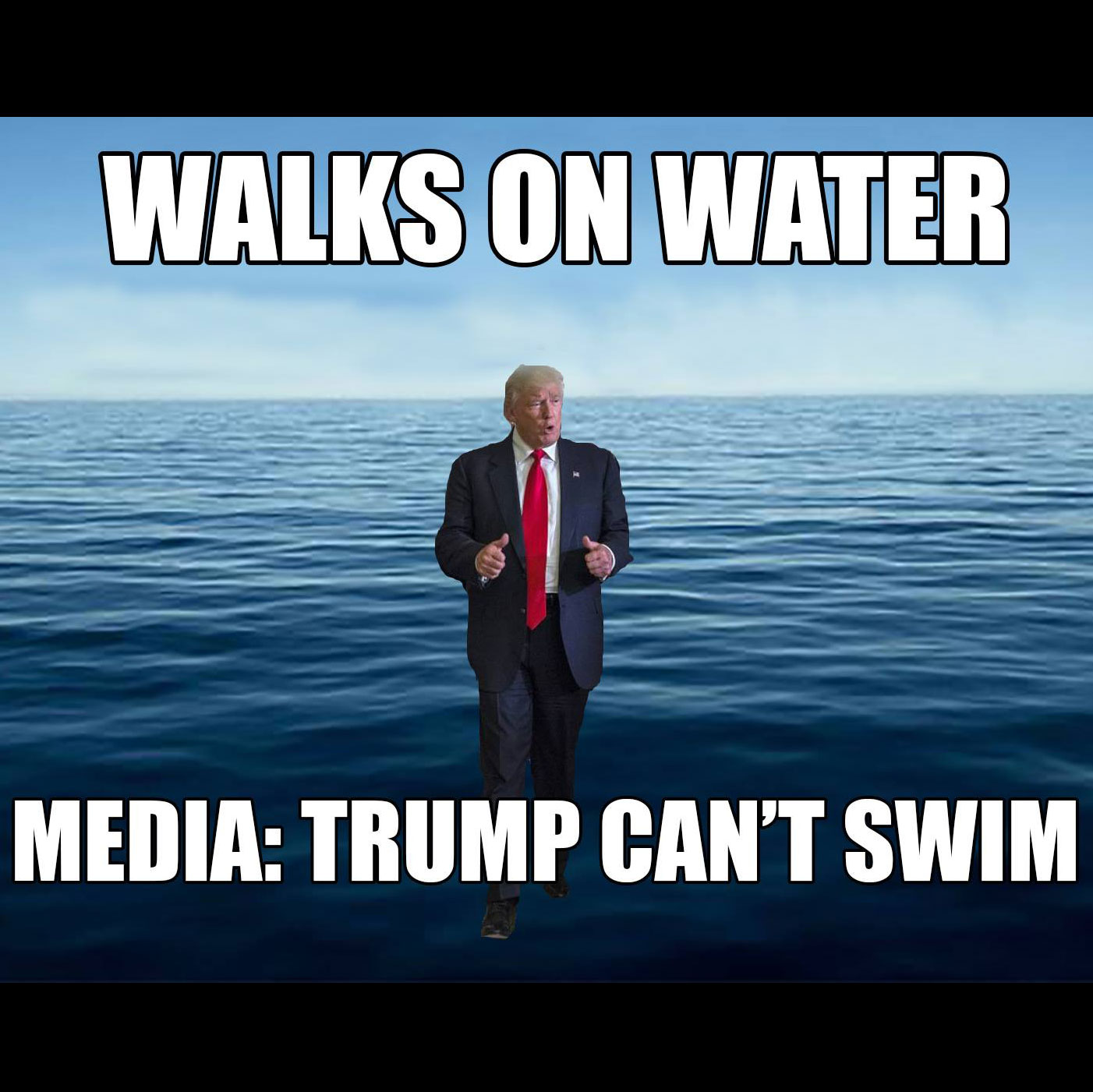
Donald Trump is not a human being. Not to you or me, anyway.
We’ll likely never touch the man, sit in the same room, or establish rapport with him. But he has nonetheless infected all of us quite intimately — some of us willingly, and some less so. That’s because he is less invasive as a person than he is as a virus. Yes, Donald Trump is a media virus, in the truest sense of the term.
I should know. I’m the guy who came up with the notion of a “viral media” back in 1994 when I coined the term for my book Media Virus: Hidden Agendas in Popular Culture. Back then, I was using the expression less as a metaphor than as functional description for the way ideas could spread in our newly interactive mediaspace, which suddenly included fax machines, camcorders, cable TV, email, and a budding World Wide Web.
The message in our media come to us packaged as Trojan horses. They enter our homes in one form, but behave in a very different way than we expect once they are inside. This is not so much a conspiracy against the viewing public as it is a method for getting the mainstream media to unwittingly promote countercultural agendas that can actually empower the individuals who are exposed to them.
One of the first examples: A black man gets beaten by white cops in 1991 Los Angeles. The event is captured on a camcorder, and the infamous “Rodney King tape” spreads across the world via cable news, overnight.
A meme is born
At first, the story spread because no one had captured anything this real, this horrific on a home video before. Someone just happened to be in the right place at the right time, and with a camera in hand. But the reason for the full-scale rioting in Los Angeles that followed went deeper than grotesque novelty. It was because, as a culture, we still had many unresolved and unexpressed issues regarding race relations, urban conditions, and police brutality. (We still do, which is why Facebook live footage of black lives not mattering still provokes such widespread response.) The important thing to get here is that a media virus spreads because of the way it interacts with its environment, not solely because of some unique trait within itself.
The extent to which we are infected by Donald Trump says less about him than it does about our immune response as a society.
A real, biological virus works the same way. A sticky protein shell very much like the protein in our own bodies is wrapped around genetic material. Unable to recognize the shell as an invader, we allow it to attach to our own cells and inject its DNA inside. The DNA then interpolates with our own DNA, looking for weak spots to nest and then order the cell to reproduce. All the virus really means to say is “Make me!” It doesn’t care which parts of the genetic code it’s challenging, so long as it gets spread and replicated.
For the Rodney King virus, the sticky shell was its novel media format: a camcorder tape. That’s what fascinated the media; media welcomes stories about media, the same way that a protein-based organism welcomes protein-wrapped invaders. The code within the Rodney King virus – the race-based violence – was what our culture found so challenging. That’s why it provoked the prolonged response and cathartic rioting.
Marketers loved the concept of a media virus, and latched onto the most superficial ways of understanding it. It finally gave them a way of understanding how messages spread in an interactive media space. They saw it as a digital form of word-of-mouth advertising, and tried to craft commercials that would “go viral,” which to them simply meant something that one internet user might pass on to another one. Their mistake, however, was in thinking that the subject of the virus — the cookie, or pop star, or cat — was the thing people cared about. As if a virus spreads because of some intrinsic quality in the virus. That’s not what happens. The virus spreads because of an intrinsic, latent quality in the culture. Both biological and media viruses say less about themselves than they do about their hosts.
That’s why the extent to which we are infected by Donald Trump says less about him than it does about our immune response as a society. A virus doesn’t make us sick unless we lack an immune system capable of recognizing the shell and then neutralizing the code. Until we do that, the virus replicates, and our immune system goes berzerk, giving us the fever, chills, congestion, or vomiting — which manifest in culture as media confusion, protests in the street, sleepless nights, and Twitter wars.
Give the people what they want
To become viral, a product, a cause or, in Trump’s case, a celebrity must actually surrender to the wave of culture. One’s own identity is less important than what the greater culture wants to engage with. Michael Jackson was a virus in his time, spreading unresolved cultural fascination with underage sex, the difference between blacks and whites, and the quest to remain young. Madonna pushed buttons on everything from virginity and teen pregnancy to gay culture and Catholicism.
The Donald Trump media virus has exposed the unresolved, hidden agendas in our popular culture.
On the viral level, at least, it’s less appropriate to think of Donald Trump as a new Berlusconi than a new Charlie Sheen. He was the last celebrity to jump into the standing wave of culture, and ride it for everything it’s worth. Of course, Sheen puttered out when he tried to recraft his Twitter meltdowns into a stage show, since the memes he was spreading about online self-destruction really only worked online. Remember: The virus only works in the right environment.
Trump keeps on replicating because — as I was trying to warn back in the early 90’s — this flood of memetic contagion has broken the levees of cable news and the internet to swallow the rest of our media. Reality TV broke the first dyke. While we all know now that reality TV is scripted, it is done so almost passively by finding wannabe media stars willing to embody the current values of culture. The Apprentice’s breakout love-to-hate star Omarosa was to that show what Donald Trump is to presidential politics: the contestant most willing to be possessed by the conflicted rage of the crowd.
None of this necessarily has anything to do with what Trump believes, does, or says. It’s not the ideas or facts he peddles, but the viral memes he generates. America has huge, unresolved issues regarding race. We haven’t had an honest conversation about slavery, much less Black Lives Matter; but neither have we engaged thoughtfully with fear and anxiety of white men who see themselves blamed for everything from income inequality to attacks on the Jedi. Whether it’s about race, sexual harassment, business impropriety, collusion with Russia, America’s lost greatness, climate science, or globalism, Trump’s memetic discharge invariably provokes an immune response on media left and right, top-down and bottom-up.
Deal with it
We can’t help ourselves. This is the fractious nature of our nascent digital political sphere, as yet un-moderated by experience or wisdom.
Even this article will be understood by many of Trump’s supporters as an attack, and by many detractors as an apologia. Yet understanding our response to Trump is the very best medicine we can take if we want to develop the ability to engage in the conversations his viral spread has proven need to take place.
The Donald Trump media virus has exposed the unresolved, hidden agendas in our popular culture. Our only choice is to engage with them, for real.







